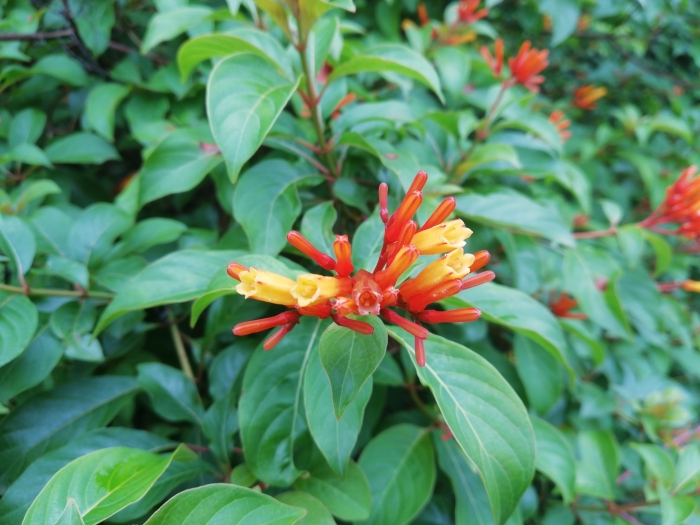Firebush
(Hamelia patens)
Firebush (Hamelia patens)
/
/

Manoj Karingamadathil
CC BY-SA 4.0



















Estimated Native Range
Summary
Firebush is valued for its ornamental appeal, particularly its vibrant flowers and its ability to attract wildlife such as hummingbirds and butterflies, making it a popular choice for wildlife gardens and tropical-themed landscapes. It is also used as a hedge or border plant and can be grown in containers. Firebush prefers full sun to part shade and requires well-drained soil, although it is tolerant of a range of soil types. It is drought-tolerant once established but performs best with regular watering. While generally low-maintenance, it can be affected by pests such as spider mites and scale insects.CC BY-SA 4.0
Plant Description
- Plant Type: Shrub
- Height: 3-8 feet
- Width: 3-5 feet
- Growth Rate: Moderate
- Flower Color: Orange, Red, Yellow
- Flowering Season: Summer, Fall
- Leaf Retention: Evergreen
Growth Requirements
- Sun: Full Sun, Part Shade
- Water: Medium
- Drainage: Medium
Common Uses
Bee Garden, Bird Garden, Border Plant, Butterfly Garden, Deer Resistant, Drought Tolerant, Erosion Control, Fire Resistant, Hummingbird Garden, Potted Plant, Salt Tolerant, Showy Flowers, Street Planting
Natural Habitat
Tropical and subtropical regions of the Americas and the Caribbean, often found in open woodlands, forest edges, and disturbed areas
Other Names
Common Names: Hummingbird Bush, Redhead, Scarlet Bush, Mexican Firecracker, Mato De Oreção, Valmoura
Scientific Names: , Hamelia patens, Hamelia patens var. glabra, Hamelia nodosa, Hamelia patens var. patens, Hamelia erecta, Hamelia pedicellata, Hamelia ovata, Hamelia sphaerocarpa, Hamelia lanuginosa
GBIF Accepted Name: Hamelia patens Jacq.